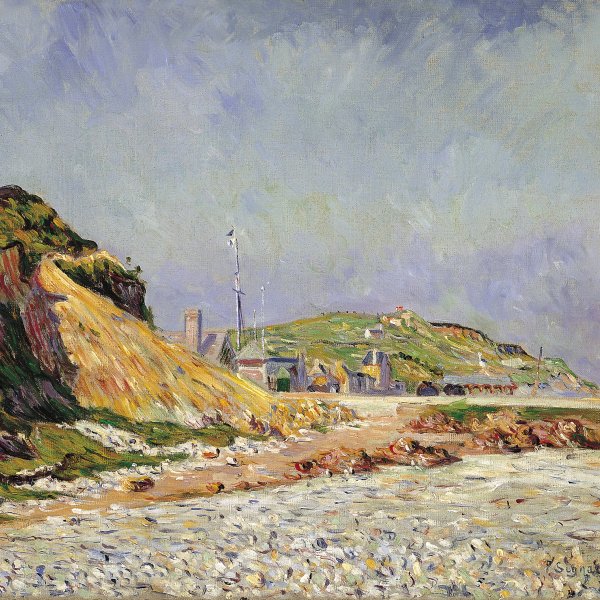Paul Signac
Paul Signac was born in Paris into a family of wealthy dealers. In 1880, he interrupted his studies and discovered the joys of sailing on the Seine in Asnières, while he also participated in the lively Chat-Noir cabaret in Montmartre. In 1882 he rented his first studio and got to know the avant-garde literary circles. He then began to paint from real life some lively and colourful sea views, in the Impressionist style. In 1884 he took part in the creation of the Société des artistes indépendants and there met Georges Seurat, who exhibited Bathing at Asnières. The two painters became friends and in 1886 Signac was among the first to adopt the technique of colour division, soon denominated "neo-Impressionism", inaugurated by Seurat. Since then, Signac remained faithful to this method and published the movement's theoretical treaty, D'Eugène Delacroix au Néo-impressionnisme in 1899. In 1892, after the death of Seurat, Signac was captivated by the port of Saint-Tropez and thereafter decided to spend part of the year there. He began to paint landscapes whose increasingly brighter colours grabbed the attention of the future Fauves. It was also in Saint-Tropez in 1892 that he began to try out watercolours, which would gradually occupy a predominant place in the artist's production. In fact, at the turn of the century Signac made a series of trips which took him from Venice to Istanbul, and he greatly appreciated the freedom offered by that medium which enabled him to compose his paintings when he returned, in the quietness of his studio. After the First World War-a traumatic experience for a pacifist such as Signac, who had settled down in Antibes in 1913-he took up again the organisation of the Société des Artistes Indépendants, of which he had become the chairman in 1908, and he began to travel the length and breadth of France, a watercolour brush in his hand.
Marina Ferretti





